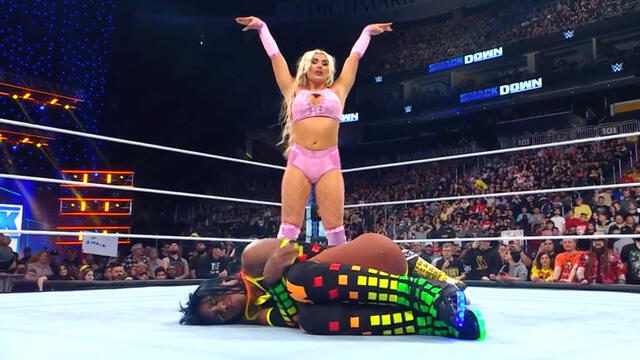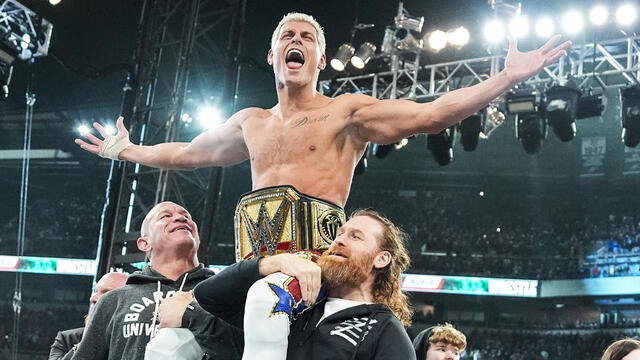Striving to Survive
For two decades, Survivor Series has been a Thanksgiving-time tradition. This year, the 20th annual Survivor Series heads to Philadelphia, making the City of Brotherly Love only the third city (following New York and Boston) to have hosted the Royal Rumble, WrestleMania, SummerSlam and Survivor Series.
Survivor Series has evolved over the years, but there has been one constant: the Traditional Survivor Series Elimination Match. At the first event in 1987, the entire card was made up of these matches. The rules were simple: two teams of five Superstars did battle in an Elimination Tag Team Match; when a Superstar was pinned, made to submit, disqualified or counted out, he or she was eliminated. The match continued until one team was completely eliminated, with the remaining members of the opposing team being declared the winners.
As Survivor Series has changed, so too has the makeup of the Traditional Match. In 1987, there were three battles pitting 5-on-5 and one tag team version that featured 10-on-10 action. The matches were modified into 4-on-4 matches in 1989, and the tag team match was abolished. The following year saw the only appearance of the Grand Finale Match of Survival, in which the all Survivors moved onto one final elimination match; even though that ended up being a 5-on-3 disadvantage for them, the team of Hulk Hogan, Ultimate Warrior and Tito Santana was victorious (with Hogan and Warrior surviving). One year later, 1991’s Survivor Series marked two firsts; when Undertaker defeated Hulk Hogan for the WWE Championship, it was not only the first title defense at Survivor Series, but it was actually the first non-elimination match in the event’s history as well.
Over the next fifteen years, Survivor Series saw a mix of all these different modifications. 1992 saw a 4-on-4 match featuring tag teams, with both members of the tag team being eliminated if one was defeated. The 5-on-5 match returned for one year in 1994, but was then shelved again until 2001, when Team WWE defeated Team Alliance in a Winner Take All battle that saw the WCW/ECW alliance go out of business. There were even two years (1998 and 2002) where there were no Traditional Matches; 1998 saw a tournament for the vacant WWE Championship, while the 2002 edition was highlighted by the debut of the Elimination Chamber Match.
As the years have gone on, the stakes have gotten higher in these matches as well. Similar to 2001’s WWE vs. Alliance battle, 2005 saw a 5-on-5 inter-brand battle for supremacy between RAW and SmackDown; SmackDown won, with Randy Orton as the sole survivor. 2005 was Orton’s third consecutive year as a sole survivor, with all three coming in high-stakes matches. In 2004, Orton was the last man standing when his team battled Triple H’s team in a 4-on-4 battle where each member of the winning team would get to be RAW General Manager for a night; just one year earlier, as a representative of Team Eric Bischoff, Orton last pinned Shawn Michaels (representing Team Stone Cold Steve Austin) to make Bischoff the sole GM of RAW.
There have been many other memorable moments in Traditional Survivor Series Matches as well. In 1990, WWE fans in the Hartford Civic Center and around the world saw the debut of Undertaker; while he was counted out for chasing Dusty Rhodes to the locker room, his team captained by Ted DiBiase was victorious. That same year, the “Visionaries” team of Rick Martel, Hercules, Paul Roma and Warlord became the first full team to survive a Traditional Elimination Match intact (a feat that has only been accomplished four times since); also, future Hall of Famer Sgt. Slaughter nearly overcame a 4-on-1 deficit in his 1990 match, but a disqualification made Tito Santana the winner instead.
Six years later, The Rock made his WWE Debut in
Madison Square Garden; he was victorious, coming back from a 2-on-1
disadvantage to be the sole survivor in his match. 1996 was also
memorable for Jimmy “Superfly” Snuka as well. One night
after being inducted into the WWE Hall of Fame, Snuka became the first
Hall of Famer to step into a WWE ring after his induction when he was
the mystery partner for Yokozuna’s team; that is also the only
Traditional Match to date that has had no survivors, as everyone was
disqualified. And in 1999, Big Show made history when he shunned his
three teammates and defeated a quartet captained by Big Boss Man on his
own.
In 2006, WWE fans will see three Traditional Survivor Series Matches; two of them will be 5-on-5 battles featuring Superstars and Extremists from all three brands, while the third is a 4-on-4 battle pitting Ric Flair, Roddy Piper, Sgt. Slaughter and Dusty Rhodes against the Spirit Squad.
Who will survive these bouts and add their names to a list that includes some of the greatest Superstars in WWE history?
RELATED CONTENT
Full history of Survivor Series
Ric Flair photos
Roddy Piper photos
Jimmy Snuka photos
Sgt. Slaughter photos
WWE Shows Latest Results
Raw results, April 15, 2024: Chad Gable viciously attacks Sami Zayn after losing to Zayn in Intercontinental Title Match!
Full ResultsSmackDown results, April 19, 2024: Tiffany Stratton introduces Bayley and Naomi to Tiffy Time with a sneak attack
Full ResultsWWE NXT results, April 16, 2024: Trick Williams defeats Carmelo Hayes in a Steel Cage Match
Full Results












